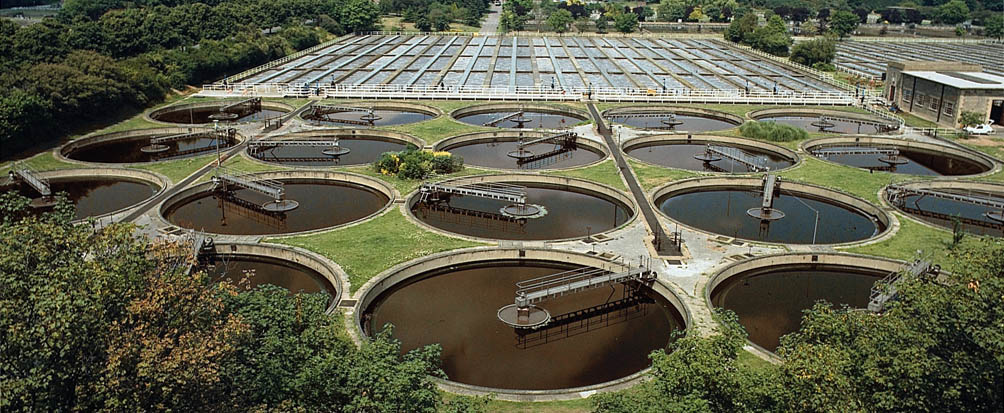Strategic Approaches to Boost Waste Water Therapy Performance and Reduce Ecological Influence
In the world of waste water treatment, the pursuit for improved performance and reduced environmental impact is a perpetual challenge that demands critical options. The integration of sophisticated treatment innovations, energy-efficient procedures, source recovery approaches, boosted nutrient removal techniques, and smart monitoring and control systems stands for a complex structure for addressing these pressing worries.
Advanced Therapy Technologies
Innovative membrane layer filtering systems have actually changed advanced wastewater therapy procedures, significantly improving the removal of contaminants. These cutting-edge systems operate by compeling water through a semi-permeable membrane, properly dividing pollutants from the water stream. The membrane layer's tiny pores trap toxins such as germs, viruses, and put on hold solids, enabling just detoxified water to pass through. This technology has confirmed to be extremely efficient in getting rid of a vast array of impurities, including drugs, heavy steels, and natural compounds, which are typically testing to eliminate through conventional treatment techniques.
Additionally, membrane filtering systems offer numerous advantages over traditional treatment approaches. They require much less space, generate higher-quality effluent, and are much more resistant to fluctuations in influent water top quality. Furthermore, these systems are extremely functional and can be conveniently integrated right into existing therapy plants or made use of as standalone systems for decentralized applications. As the demand for tidy water continues to rise, the fostering of sophisticated membrane filtering modern technologies is vital to guarantee reliable and lasting wastewater therapy techniques.
Energy-Efficient Processes
The assimilation of energy-efficient procedures in wastewater treatment systems is critical for maximizing source use and lowering functional prices. By applying energy-efficient technologies, therapy plants can dramatically reduce their carbon impact and total environmental influence. One crucial method to boosting power effectiveness in wastewater therapy is the use of sophisticated aeration systems, such as fine bubble diffusers or surface area aerators, which can enhance oxygen transfer performance and lower energy consumption. Additionally, integrating power recuperation systems, like anaerobic food digestion for biogas manufacturing or utilizing excess warm for thermal processes, can aid balance out power requirements and advertise sustainability.
Furthermore, enhancing procedure control and automation with using innovative sensors and checking systems can enhance general power efficiency by readjusting operations in real-time based on actual need and problems. Carrying out power audits and regularly monitoring energy efficiency signs are essential techniques to recognize locations for improvement and track energy-saving campaigns efficiently. Overall, the adoption of energy-efficient processes in wastewater therapy not only benefits the atmosphere yet additionally adds to long-term cost financial savings and operational sustainability.
Resource Recovery Strategies
With an emphasis on maximizing resource utilization and sustainability in wastewater treatment systems, the implementation of resource recuperation approaches becomes a pivotal facet in enhancing functional performance. Resource recovery approaches in wastewater treatment entail the identification and removal of valuable sources from the waste stream, thereby transforming what was once taken into consideration waste right into an important asset. By implementing source healing strategies such as nutrient elimination and recuperation, power generation from organic matter, and the manufacturing of multiple-use water, wastewater therapy plants can decrease environmental impact while optimizing efficiency.

Enhanced Nutrient Removal Techniques
Implementing advanced nutrient elimination methods is essential for optimizing the efficiency of wastewater therapy systems. Boosted nutrient elimination plays a vital function in lessening the ecological effect of cured effluent released into water bodies. One of the key methods used for improved nutrient elimination is the process of biological nutrient elimination (BNR), which entails the elimination of nitrogen and phosphorus through organic processes. This can be achieved with the use of specialized bacteria that can transform nitrogen substances into inert nitrogen gas via denitrification, and gather phosphorus within their cells through a process called boosted organic phosphorus removal (EBPR)

Along with BNR, advanced treatment approaches such as membrane bioreactors (MBRs) and created marshes can also be utilized to boost nutrient click here to find out more removal performance. MBRs utilize membrane layers to attain premium effluent criteria by properly removing nutrients and put on hold solids. Created wetlands simulate natural marsh procedures to eliminate nutrients through plant uptake, microbial task, and sedimentation. By integrating these sophisticated nutrient elimination strategies into wastewater therapy systems, communities and industries can successfully decrease nutrient air pollution and protect the environment.
Smart Monitoring and Control Equipment
Using sophisticated modern technology, the combination of clever tracking and control systems reinvents the functional performance of wastewater treatment facilities. These systems include advanced sensing units and data analytics to continually monitor key criteria such as pH levels, turbidity, dissolved oxygen, and circulation rates in real-time. By gathering and examining this information, drivers can acquire useful understandings into the performance of the therapy procedures, enabling aggressive adjustments to maximize treatment performance.
Smart monitoring and control systems additionally support remote tracking capacities, enabling drivers to access real-time information and control features from off-site places. This remote access improves functional flexibility and responsiveness, allowing speedy interventions in situation of system breakdowns or fluctuations in influent high quality. The anticipating maintenance abilities of these systems assist protect against equipment failures Resources and lessen downtime, inevitably improving the overall dependability of wastewater therapy procedures.
Verdict
Finally, calculated strategies such as advanced treatment technologies, energy-efficient processes, resource healing approaches, enhanced nutrient removal strategies, and smart tracking and control systems play a critical role in enhancing wastewater treatment efficiency and minimizing ecological impact. By carrying out these methods, wastewater therapy plants can improve their total efficiency, decrease energy consumption, recoup beneficial resources, and make certain compliance with ecological laws. These techniques are essential for effective and lasting wastewater administration practices.

In conclusion, strategic approaches such as innovative treatment innovations, energy-efficient procedures, resource recuperation techniques, enhanced nutrient removal techniques, and wise tracking and control systems play an essential role in boosting wastewater treatment efficiency and lessening ecological effect.